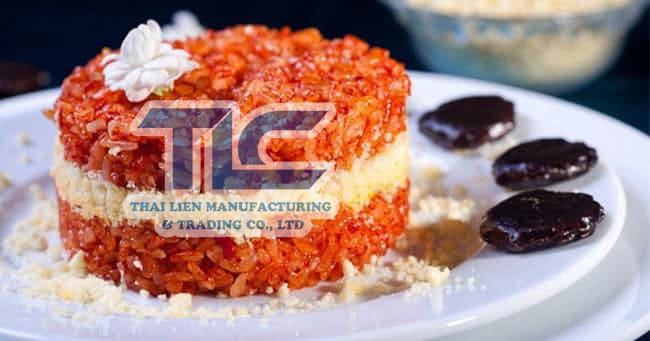If glutinous rice is Vietnam’s staple crop, xôi (sticky rice) is the nation’s choice dish, which is typical in every Vietnamese family’s daily life. So what is Vietnam glutinous rice, explore it read
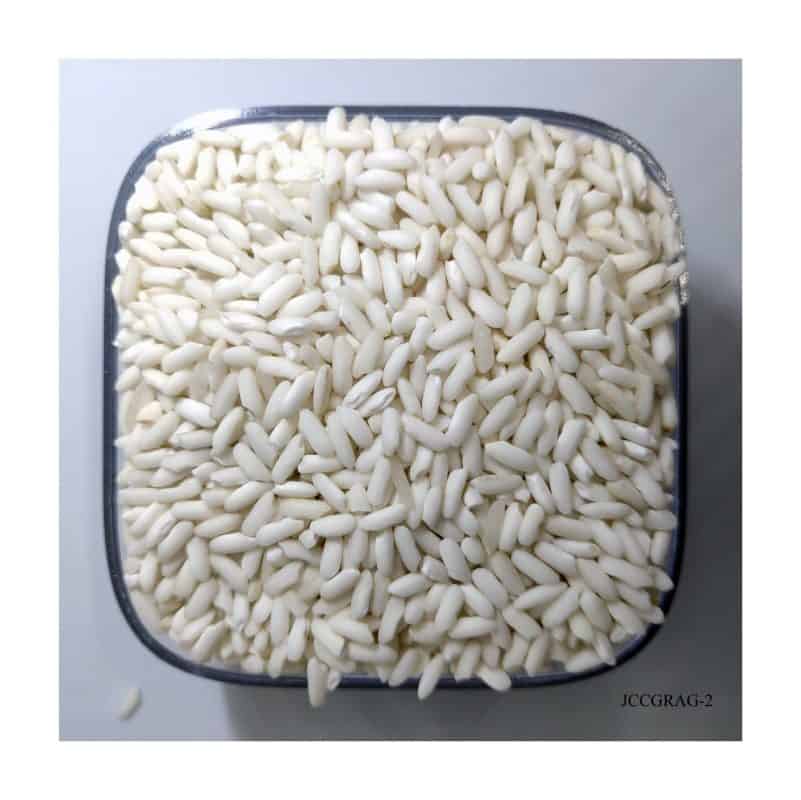
Viet Nam Glutinous rice?
Glutinous rice is a kind of rice mostly grown in Asia. It is currently sold in retailers all around the world. The consistency of glutinous rice when cooked has earned it the nickname “sticky rice.” It’s a filling breakfast, lunch, or supper option. Glutinous Lotus Rice, which is grown in the Mekong Delta, retains all of its natural qualities.
Glutinous rice is preferred by Asian populations for sweet sweets and snacks. Desserts can also be made using the rice to make them more full. Glutinous rice is occasionally crushed into a fine powder and then used to produce a cereal. For breakfast, it’s sweetened with sugar or honey and combined with milk. Other nations choose to use it as a side dish or to prepare Spanish rice with it.
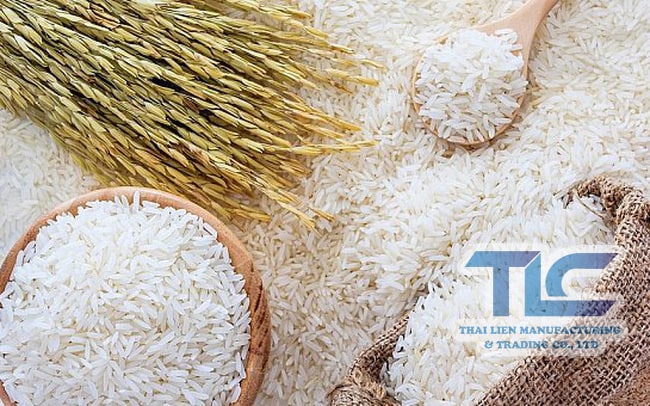
- Korea glutinous rice market
Sticky rice is known in Korea as “chapssal” (찹쌀) which literally translates to “sticky rice,” since it gets soft and sticky when cooked. It is beneficial to those who suffer from digestive difficulties because it is easy to digest and does not irritate the stomach lining. Cooked rice, rice cakes, and porridge are made from glutinous rice, which is also used as a filling in ginseng chicken soup (“samgyetang”). To make sticky rice softer and more appealing, combine it with white rice and other grains.
- Japanese glutinous rice market
Japanese glutinous rice or sweet rice is known as (mochigome もち米 or mochi rice). Glutinous rice grains are opaque, shorter, and rounder, and are used to make mochi (rice cakes), traditional sweets rice such as sekihan, and snacks such as rice crackers.
- Chinese glutinous rice market
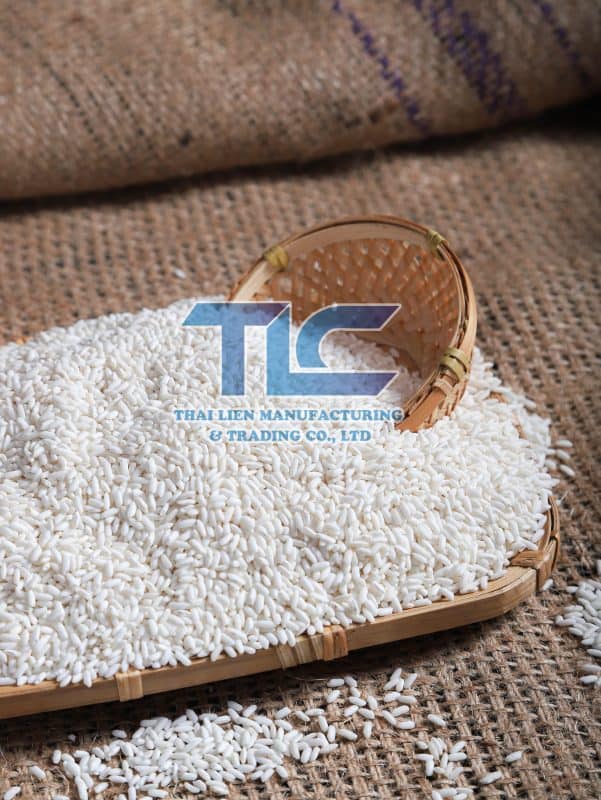
Chinese sticky rice (Nuòmǐ fàn 糯米飯) is a glutinous rice dish typically cooked with soy sauce, oyster sauce, scallions, cilantro, and other ingredients. Dim sum is a popular way to serve this meal.
Glutinous Rice’s Nutritional Information
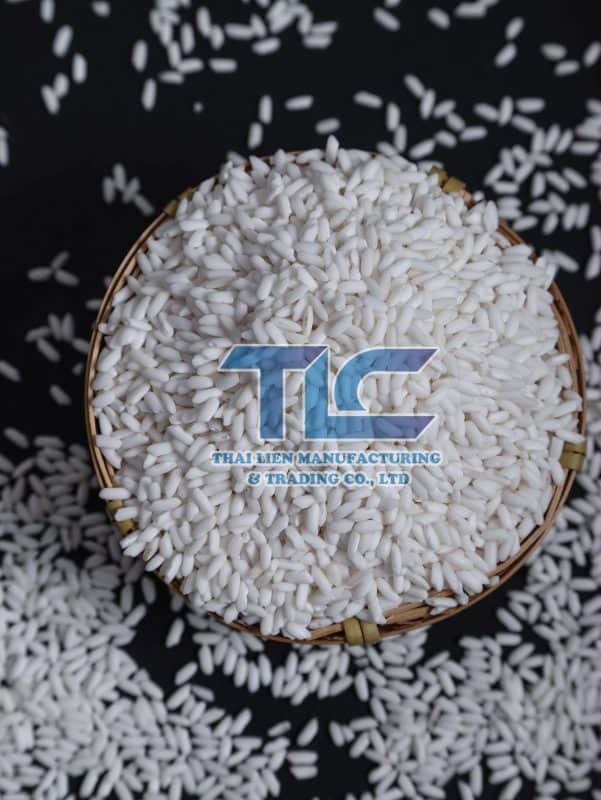
Glutinous rice is one of the most fiber-dense foods available. When compared to white rice, glutinous rice has higher insoluble fiber. Vitamins B and D, potassium, and phosphorus are also found in glutinous rice. These nutrients are necessary for bone development and maintenance. They’re also necessary for immune system function, neuron function, metabolism, and organ functionality.
Glutinous rice, like most rice varieties, is low in calories. About 200 calories are in one cup. Glutinous rice offers complex carbs, which can help reduce hunger, despite the fact that they have nearly the same number of calories. Glutinous rice also aids in blood sugar and insulin regulation. Diabetics can benefit from glutinous rice since it helps them control their blood sugar and insulin levels.
How to Cook Glutinous Rice
Glutinous rice should be cooked in a bamboo basket if possible. If you don’t have one in your kitchen, you can use a wire mesh rack in your steamer instead. You’ll need the following items:
- 1 cup glutinous rice
- 1-2 cups water
- Bamboo basket or rice steamer
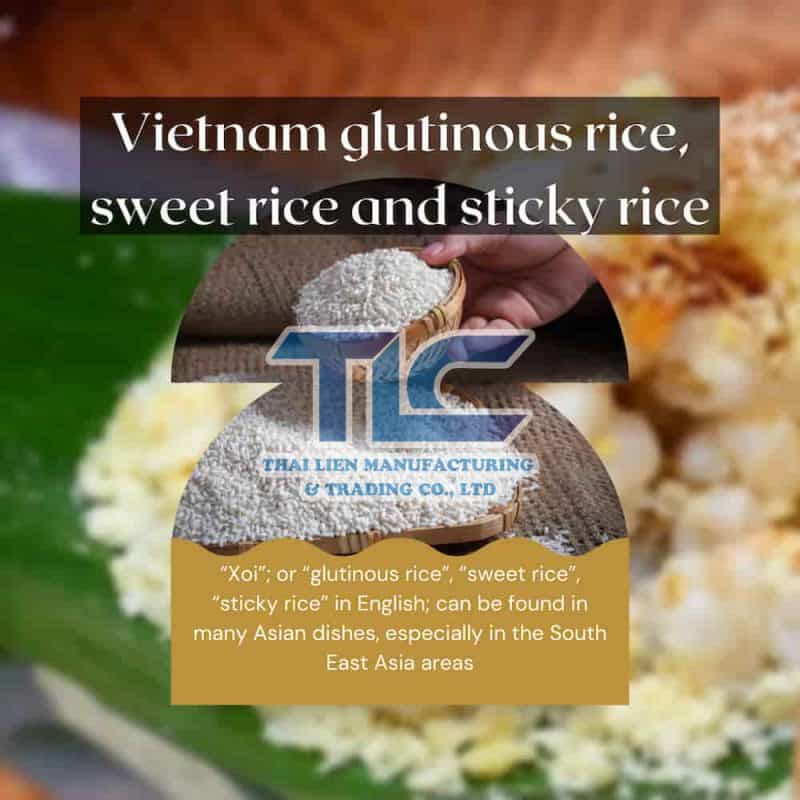
Step 1:
In a large mixing dish, soak the rice overnight. This results in the nicest texture for sticky rice. Water should be drained.
Step 2:
Collect rice in a bamboo basket and cover it in cheese cloth or muslin. Cook for 15 minutes on one side, then flip the cloth and cook for 15 minutes more. Cook the glutinous rice in a steamer until it reaches a sticky consistency. Cook it for a few minutes longer if it’s still watery. Serve.
What is Xoi (Sweet rice, sticky rice, glutinous rice)?
“Xoi”; or “glutinous rice”, “sweet rice”, “sticky rice” in English; can be found in many Asian dishes, especially in the South East Asia areas. Vietnamese cook “xoi” by soaking glutinous rice for four hours or until the grains have absorbed enough water. The rice will then be drained and dried, allowing the grains to remain whole, soft but not mushy, and clinging together in a lump. People can sometimes create “xoi” in an electric rice cooker by following the same steps as when cooking conventional rice. Under direct heat, however, the grain will degrade, becoming glue-like and soggy. “Xoi” can be eaten at any time of day, although Vietnamese people often pick it as a cheap and delicious breakfast food.
Xôi mặn
More information about TLC THAI LIEN
TLC THAI LIEN specializes in the production and delivery of quality standard rice, offering a source of pure and quality rice for charity, production, commercial and export units. TLC THAI LIEN is a dependable source of supply for domestic and international partners because to its commitment to rice quality. Commitment to not mixing rice and to not providing consumers with counterfeit items.
Thai Lien Manufacturing & Trading has been offering high quality rice, including glutinous rice and red-black brown rice, for a long time, so if you’re looking forward to tasty yet healthy meals, don’t hesitate to contact us right away for purchasing guidance!
- Address: 2nd Floor, P&T Office Building 27-29 Pho Duc Chinh street, Nguyen Thai Binh ward, D1, HCMC, VIETNAM
- Email: thaiphuong@tlcthailien.com – fionathai.thailientlc@gmail.com
- Hotline: +84.789196398
- Facebook: Thai Lien Viet Nam

